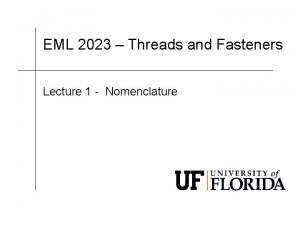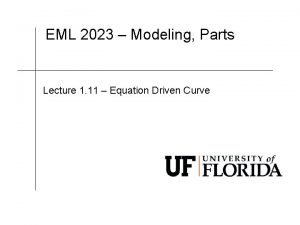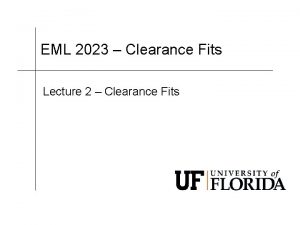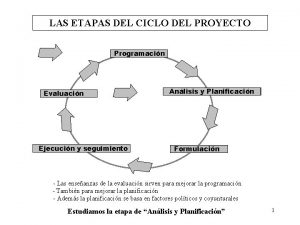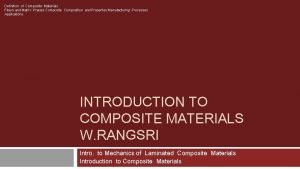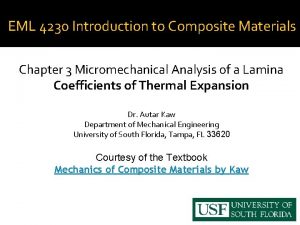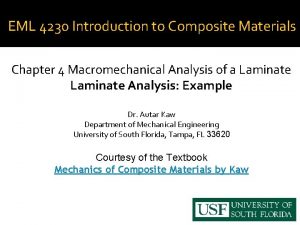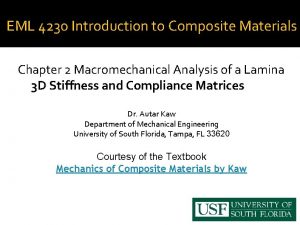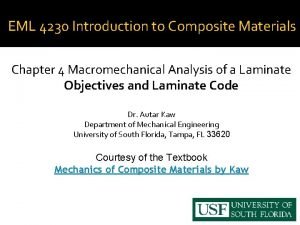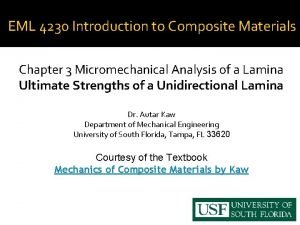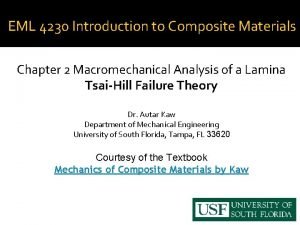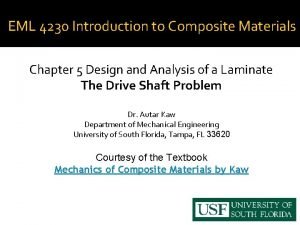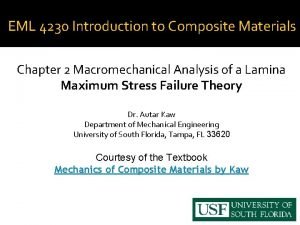EML 4230 Introduction to Composite Materials Chapter 2









- Slides: 9

EML 4230 Introduction to Composite Materials Chapter 2 Macromechanical Analysis of a Lamina Comparison of Failure Theories Dr. Autar Kaw Department of Mechanical Engineering University of South Florida, Tampa, FL 33620 Courtesy of the Textbook Mechanics of Composite Materials by Kaw

Strength Failure Theories of an Angle Lamina � The failure theories are generally based on the normal and shear strengths of a unidirectional lamina. � An isotropic material generally has two strength parameters: normal strength and shear strength. � In the case of a unidirectional lamina, the five strength parameters are: q Longitudinal tensile strength q Longitudinal compressive strength q Transverse tensile strength q Transverse compressive strength q In-plane shear strength

Experimental Results and Failure Theories � Tsai and Wu compared the results from various failure theories to some experimental results. He considered an angle lamina subjected to a uniaxial load in the x-direction. FIGURE 2. 33 Off-axis loading in the x-direction

Experimental Results and Maximum Stress Failure Theory FIGURE 2. 34 Maximum normal tensile stress in x-direction as function of angle of lamina using maximum stress failure theory

Experimental Results and Maximum Strain Failure Theory FIGURE 2. 35 Maximum normal tensile stress in x-direction as function of angle of lamina using maximum Strain failure theory

Experimental Results and Tsai-Hill Failure Theory FIGURE 2. 36 Maximum normal tensile stress in x-direction as function of angle of lamina using Tsai-Hill failure theory

Experimental Results and Tsai-Wu Failure Theory FIGURE 2. 37 Maximum normal tensile stress in x-direction as function of angle of lamina using Tsai-Wu failure theory

Comparison of Strength Ratios S = 16. 33 (Maximum Stress failure theory), = 16. 33 (Maximum Strain failure theory), = 10. 94 (Tsai-Hill failure theory), = 16. 06 (Modified Tsai-Hill failure theory), = 22. 39 (Tsai-Wu failure theory)

END


